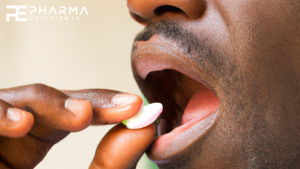Comparison of Berberine Bioavailability between Oral and Rectal Administrations in Rats

Abstract
The oral bioavailability of berberine is quite low due to extensive first-pass metabolism. To increase the bioavailability of berberine (BBR), the efficacy of rectal administration that can avoid intestinal and hepatic first-pass metabolism partly was evaluated using BBR sulfate in rats. BBR sulfate was administered intravenously (1 mg/kg as BBR), orally (10 mg/kg as BBR) and rectally (1, 3, or 10 mg/kg as BBR) using Witepsol® H15 suppository base to evaluate bioavailability in rats. Concentrations of BBR in plasma were determined by liquid chromatography-tandem mass spectrometry (LC-MS/MS). When BBR sulfate was administered orally, the average oral bioavailability was 0.26%. When BBR sulfate was administered rectally, the average bioavailabilities were 17.0% at 1 mg/kg, 24.3% at 3 mg/kg, and 12.3% at 10 mg/kg as BBR, respectively. Thus, rectal administration of BBR sulfate greatly increased the bioavailability of BBR as compared with oral administration, which would also increase the pharmacological activities of BBR in vivo.
Introduction
Berberine (BBR) possesses a variety of pharmacological actions and is traditionally used for the treatment of a wide range of diseases, in addition to diarrhea and intestinal parasites.1,2) The clinical application of BBR, however, is limited due to its low oral bioavailability. The reported absolute oral bioavailability of BBR in rodents is less than 1%, and the urinary excretion rates of BBR are around 0.01–0.02% of the dose in rats and humans as reviewed.3,4) When BBR bioavailability in rats (0.356%) was analyzed pharmacokinetically, the low oral bioavailability of BBR was found to be due to the extensive intestinal first-pass metabolism (>98%).5) BBR is metabolized by plural cytochrome P450 enzymes (CYPs) including CYP1A2, CYP2D6, and CYP3A4.6)
In the present study, BBR sulfate was used as BBR and the rectal bioavailability of BBR sulfate was compared with the oral bioavailability in rats. BBR sulfate exhibits higher solubility than other BBR salts, and the rectal route can avoid both intestinal and hepatic first-pass metabolism at least partly.7–10)
Download the full article as PDF here Comparison of Berberine Bioavailability between Oral and Rectal Administrations in Rats
or read more here
Materials
BBR sulfate and Witepsol® H15, a suppository base, were obtained from Sigma-Aldrich Co., LLC (Tokyo, Japan) and Specialized Rx Products, LLC (MN, U.S.A.), respectively. Other reagents and solvents used were the highest quality available.
Nobuhiro Mori , Keisuke Oda, Hideki Takakura, Yusuke Tanaka, Tomoharu Yokooji, Teruo Murakami, Comparison of Berberine Bioavailability between Oral and Rectal Administrations in Rats, https://doi.org/10.1248/bpb.b23-00444, Vol. 46, No. 11 Biol. Pharm. Bull. 46, 1639–1642 (2023), © 2023 The Pharmaceutical Society of Japan
Read more on Orally Disintegrating Tablets (ODTs) here:


